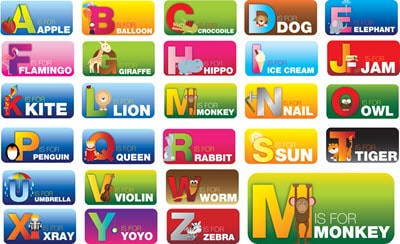How to Help a Child Struggling With Reading: Support Tips for Parents & Readers in Struggle
Welcome to our guide on how to help a struggling reader.
Acknowledging that children struggle with reading is the first step towards empowering them.
So, as parents and educators, it’s essential to remain positive and proactive when you find your child struggling with literacy skills.
We’ll explore several strategies tailored to help struggling readers build confidence and enhance their skills.

These practical tips can lead to significant progress for your child. For more in-depth guidance and additional strategies, be sure to read our comprehensive review of Children Learning Reading.
Remember, each small step is significant, and with your support and encouragement, your child struggling with reading today has the potential to become an enthusiastic reader tomorrow.
Creating the Ideal Reading Environment for Your Child
Establishing a conducive home environment is critical for nurturing your child’s reading abilities. In doing so, you’ll not only show that you value their development but also encourage a lifelong love of reading.
Tips for Building a Dedicated Readers Nook
Creating a dedicated readers nook at home is a wonderful way to support a child who’s struggling with reading. Such a space can be a cozy alcove or a tranquil corner that your little one can claim as their own.
Designed with comfort in mind, this nook fills the air with an aura of allure towards books, encouraging your child’s enthusiasm and ownership in their reading journey.
In crafting this special zone, consider the ways you can make it a serene haven.
Whether it’s under the stairs or in a sunlit part of the living area, aim for a zone free from buzzing televisions to enhance focus. Throw in some cushions and pillows for added comfort. It’s these small touches that call children towards their stack of books for a rewarding reading session.
Involving your child in choosing color schemes transforms the space into an extension of their personality. Their engagement doesn’t just turn the wheels of creativity; it also fosters a connection between them and their books.
Don’t forget fun elements like tents or canopies, especially if space is tight (just ensure there’s room for you to cuddle up with a book in hand, to read together at home).
Remember, a readers nook isn’t complete without a vibrant selection of books. So, stock up on genres and themes that speak to your child’s curiosity and interests. By doing so, you pave the way for endless adventures and learning right at home, making reading not just a task, but a doorway to worlds of wonder.
Keeping a Variety of Age-Appropriate Books to Help Your Child Read
Selecting a wide range of books that match your child’s reading level is crucial.
By ensuring the books are age-appropriate, you can better engage your child’s interest and understanding. A delightful mix of books that are just right for their level will also bolster their confidence. With a library of varied books fine-tuned to their level, each reading experience becomes an opportunity for progress.
Remember, a book that’s too challenging may discourage them, so always align selections with your child’s reading level for maximum benefit.
Why Choosing Skill-Appropriate Books is Crucial for Children Who Struggle
Choosing skill-appropriate books is vital for kids who are struggling readers.
When books are beyond what is suitable for your child’s reading level, the reading process can become discouraging. Such a negative experience might deter your child from embracing reading with enthusiasm.
On the other hand, sticking exclusively to books that don’t stretch the boundaries of your child’s abilities can lead to stagnation in their literary development.
A bit of a challenge is necessary for growth, so finding books that are tailored to your child’s reading level is the key. The right level will entice and engage your child, offering just enough difficulty to encourage progress in their reading skills without overwhelming them.
Using the 5-Finger Test to Find the Right Books for Your Child
Finding the perfect books to match your child’s reading level can be as straightforward as trying the 5-Finger Test.
Let’s start by picking a book that piques your kid’s interest. Flip to a random page filled with text and have them read aloud.
For each word they struggle with, they’ll raise a finger. Here’s what the number of fingers tells you:
0 – 1 fingers are raised
The book is probably too easy
2 – 3 fingers are raised
The book may be just right for your child. Presenting a slight challenge and introducing them to new words.
4 – 5 fingers raised
The book is probably too difficult for them to read right now.
Remember, the 5-Finger Test is a flexible tool to gauge a suitable reading level for kids. It’s not definitive; trust your judgment.
If a challenging book captures your child’s imagination, consider reading it to your little one. That way, you turn a potentially frustrating situation into an opportunity for bonding and learning.
Interactive Reading Techniques: How to Help Your Child Read
Engaging with struggling readers through interactive reading can be a game-changer in overcoming their reading difficulties.
As you explore how to help your child read more confidently, consider incorporating dialogic reading, where you prompt them with questions about the story. For children who struggle with reading, partner reading sessions can offer tremendous support, making the journey more enjoyable and less daunting.
Remember, patience is key when assisting struggling readers; celebrate every small victory to keep your child’s reading enthusiasm burning bright. The result isn’t just a boost in skills, but also a blossoming love for the world of words.
Reading with Your Child at Home to Improve Their School Performance
By embracing the wisdom of ‘practice makes perfect,’ we see its profound impact when reading with your child.
Regular reading sessions not only keep your child’s skills sharp but also deepen their engagement and enjoyment of the activity. Make these moments engaging and part of your routine to help nurture a lifelong love of reading.
It’s crucial to integrate a daily reading routine into your home life. This not only fosters improvement in reading skills but also ignites a lifelong love for literature. Maintaining this consistency is sure to enhance their school performance as well.
Children flourish with structure, and establishing a time for reading at home can become a cherished part of their day, especially when you’re there to share in the experience. Incorporating read aloud sessions from infancy lays a foundation for language acquisition, vocabulary expansion, and nurturing your special bond. It’s never too late to start; your continued commitment to this practice as they grow is invaluable.
When your child reads aloud at home, lean in with genuine curiosity.
Engage with the storyline and characters they describe, and keep the dialogue interactive by asking insightful questions. Praising their efforts reinforces confidence and fortifies their reading journey. Beyond literacy, these moments enhance cognitive growth and communication abilities. The daily exchange of stories and insights is indeed essential, a non-negotiable pact between you and your child.
This simple act of reading with your child leaves an indelible mark on both their academic journey and their heart.
The above tips not only elevate your child’s reading skills but to also ignite their passion for the world of books. Now, let’s look at a few teaching strategies that will further sharpen their literacy prowess.
Phonics Instruction: A Key to Helping Children Struggle Less
Phonics instruction can be a game-changer for kids who struggle with reading.
It systematically enhances crucial skills for word recognition, enabling struggling readers to understand text on their own. With a strong foundation in phonics, young readers can transform their challenges into manageable tasks. This approach is particularly effective as it breaks down language into comprehensible parts, promoting gradual and sustained improvement in their reading abilities.
For parents, engaging in phonics instruction with your child not only boosts reading skills but also fosters a bond through shared victories over each hurdle.
What is Phonics and How Can It Help Your Child?
Phonics plays a crucial role in helping children decode words by linking sounds with letters or groups of letters.
By integrating phonics into reading routines, it significantly improves a child’s ability to recognize patterns and boost their reading skills. This foundational method is especially beneficial for young readers facing challenges.
A solid phonics background not only increases a child’s confidence but also sets the stage for academic success.
As they continue to focus on phonics, children discover the joy of reading, transforming their reading challenges into achievements.
The Importance of Phonics in Reading Success
Understanding the importance of phonics is pivotal for parents trying to support a child struggling with reading.
Phonics is a cornerstone in reading success. It enables children to grasp the relationship between letters, words, and their sounds. Many kids struggle because of a lack of phonological awareness, which includes the ability to recognize and manipulate sounds in spoken words (a critical skill).
It’s not just about helping your child recognize words; it’s about giving them the tools to decode the unfamiliar. By mastering approximately 44 sounds, your child can navigate the complexities of the English language, a far more efficient approach than memorizing countless words.
As they hone their phonics skills, you’ll notice a marked improvement in their ability to read fluently, which is an integral part of their educational journey and reading success.
Effective Phonics Techniques for a Child Struggling with Reading
- Sound Out Letters: Teach the child to recognize and pronounce each letter sound individually before combining them.
- Blending Sounds: Practice combining individual sounds to form words, gradually increasing complexity.
- Segmentation: Help the child break down words into individual sounds, enhancing their ability to decode words.
- Phoneme Manipulation: Work on adding, deleting, or substituting sounds in words to build phonemic awareness.
- Use of Phonics Games: Incorporate engaging games that focus on phonics skills to make learning fun and interactive.
- Multisensory Learning: Combine visual, auditory, and kinesthetic activities to reinforce learning.
- Consistent Practice: Ensure regular and structured practice sessions to build and maintain skills.
- Reading Aloud Together: Regularly read aloud to the child and have them read to you, focusing on sounding out words accurately.
Choosing Effective Learning Programs to Support Your Struggling Reader
Choosing the right learning programs is crucial for helping struggling readers progress.
These programs provide structured and systematic methods tailored to meet individual learning needs. For parents, exploring different options ensures that they find the best resources to support their child’s reading development. Regular use of these high-quality resources can significantly enhance the reading experience, offering the support each child needs to succeed.
It’s beneficial for parents to use multiple resources, as each one can uniquely enhance a child’s literacy skills, turning struggling readers into confident, lifelong learners.
Evaluating Resources and Programs for Improvement
Navigating the wealth of resources and programs available for reading improvement is crucial for supporting struggling readers.
As a guardian, it’s important to understand that these programs are not all designed with the same user in mind. Some are crafted for educators, while others are more suited for parents, especially those with limited teaching experience.
This distinction helps in selecting the most appropriate and effective resources to aid your child’s reading journey.
When exploring options, it’s crucial to choose a program that offers a comprehensive approach, covering various literacy levels crucial for addressing reading difficulties.
Opt for a program that enhances your child’s phonological awareness, a foundational skill for phonics mastery and overall reading development. Actively overseeing your child’s reading progress is not only about guiding them through learning but also involves hands-on involvement to address issues and build a strong reading foundation.
This involvement can be incredibly rewarding as you help navigate and improve their reading skills.
Although we often suggest the Children Learning Reading program, it’s crucial to conduct your own research to ensure the program you select resonates with your child’s unique needs. After all, when it comes to improvement, the perfect fit can make all the difference for a reader in struggle.
Practical Reading Tips and Strategies for Children Struggling to Read
Short, Engaging Lessons as Recommended by Educational Experts
Children have limited attention spans, which is why short lessons are highly recommended by educational experts to maintain their focus and interest in reading.
To address this, aim for two to three reading sessions daily, tailoring each to be about five to ten minutes long for younger kids. This strategy not only captures their attention but also fosters a joyful and enthusiastic approach towards reading.
For older kids, feel free to extend the lesson duration slightly.
Remember, there’s no need to rush (reading is a journey, not a sprint). Take it slow, ensuring your child fully grasps each lesson. This deep understanding of material enhances their language skills and boosts self-confidence.
Introduce one concept at a time for a solid reading foundation, and don’t hesitate to let them repeat lessons. Repetition aids in improving comprehension, sounding out new words, and sharpening word recognition.
Age Group | Suggested Reading Session Length (Minutes) | Notes |
0-2 Years | 1-3 | Short sessions focused on pictures and sensory experience. |
3-4 Years | 5-10 | Incorporate storytelling and ask questions to engage. |
5-6 Years | 10-15 | Begin to introduce longer stories with more text. |
7-8 Years | 15-20 | Children can handle slightly longer sessions with engaging content. |
9-10 Years | 20-30 | Introduce chapter books and include interactive discussions. |
11-12 Years | 30-40 | Can engage with complex narratives and sustain longer reading sessions. |
13-14 Years | 40-50 | Encourage independent reading and exploration of various genres. |
15+ Years | 50-60 | Focus on in-depth analysis and critical thinking about texts. |
Using Multisensory Techniques to Make Reading More Accessible
When Kids face challenges in reading, incorporating multisensory techniques can make the learning process significantly more accessible.
Multisensory methods engage multiple senses, enabling struggling readers to better connect with the material. Using sight, sound, touch, and movement, enhances their understanding and retention of reading concepts. These techniques are particularly beneficial for children who learn differently, providing a diverse set of tools to decode and comprehend text.
You’ll find that multisensory strategies contribute to a supportive environment, making reading a more attainable and enjoyable activity for struggling young readers.
Monitoring Progress and Determining When to Seek More Help
Monitoring progress to understand your child’s reading journey is crucial.
When it comes to reading difficulties, knowing when to seek help can be pivotal.
Keep an eye on your child’s progress, and if struggles persist despite your supportive strategies, it’s advised to get help. Taking timely action is essential for struggling readers who may need additional intervention.
Maintaining vigilance about children’s progress will empower you to seek help at the right moment, ensuring that your child receives the comprehensive support they deserve to overcome their reading challenges.
How to Track Your Child’s Reading and Writing Progress in School
To effectively track your child’s reading and writing progress in school, it’s vital to communicate regularly with their teachers.
School performance reports offer insights, but proactive engagement will paint a clearer picture. Ensure you’re up-to-date with reading assessments and writing assignments, as these are key indicators of advancement.
At home, observe your child’s comfort with reading and writing tasks, noting any challenges.
Recognizing Problems and Difficulties Associated with Reading
Recognizing problems early can make a significant difference in your child’s educational journey. Kids struggle with reading for various reasons, and it’s essential to identify these struggles so we can offer the right support.
Here are some of the more common ones:
- Visual tracking challenges or visual impairment
- Struggles associated with ADHD or dyslexia
- Decoding words difficulty
- Poor phonemic awareness
- Comprehension difficulties due to limited vocabulary or confusion with word families
- Regression in reading skills possibly linked to anxiety, creating a reluctant, anxious reader
- Problems sounding out words, especially unfamiliar sight words
- Speech and language development impacts on reading ability
For detailed guidance on when to be proactive about your child’s reading difficulties, read our comprehensive article on when should I be concerned about my child’s reading, which offers valuable insights and actionable advice.
Identifying Learning Disabilities in Children
When children struggle with reading, it’s crucial to consider learning disabilities such as dyslexia as a potential underlying factor. Identifying these difficulties early on can greatly assist in tailoring educational strategies.
Careful observation of your child’s reading struggles provides essential clues.
If they persistently find reading challenging despite supportive home environments and appropriate strategies, a learning disability might be present. Dyslexia, specifically, affects the way children process language, often leading to struggles that are misunderstood without proper identification.
Be vigilant for signs of learning disabilities, as they play a significant role in tailoring an approach to overcome reading challenges.
Enhancing Parental Involvement and Attitude
Your positive attitude and steadfast support can turn reading challenges into a rewarding journey for your child.
Actively and empathetically engaging with your struggling reader boosts their confidence and determination. By nurturing and guiding them, whether through selecting appropriate books or employing multisensory techniques, your involvement becomes a crucial catalyst in their progress.
Remember, the ultimate goal is not just improving reading skills but fostering a lifelong love of reading.
The Role of Patience and Commitment in Supporting Your Child
Embracing the role of patience and commitment is vital in supporting your struggling readers.
As children learn at different paces, it’s crucial to provide unwavering support without pressure.
Remember, consistent commitment fosters a conducive learning atmosphere for children. With patience, you’ll notice gradual progress, inspiring struggling readers to persevere.
By committing to regular and patient practice, you’ll provide the steadfast support that encourages your child, highlighting that with time and effort, overcoming reading challenges is possible for any child struggling with reading.
How Parental Enthusiasm and Setting a Good Example Can Inspire Children to Read More
Inspiring children to read more can be joyously achieved through parental enthusiasm and setting a good example.
When a child sees a parent’s genuine excitement about reading, it’s infectious.
Parents getting involved in story times or discussing books can motivate a child to delve into their own reading adventures. Kids often mirror the behaviors they observe; thus, when they witness you immersed in a book, their curiosity is piqued. Remember, the goal isn’t just getting your child to read; it’s fueling a lifelong passion for reading by showcasing its pleasure and benefits directly.
Keep inspiring, and watch your little reader flourish!
Read Together Daily:
Benefits:
- Strengthens the parent-child bond.
- Encourages a habit of reading.
- Improves the child’s listening and comprehension skills.
Choose Engaging Books:
Benefits:
- Motivates children to read on their own.
- Helps to develop a personal interest in reading.
- Builds positive reading experiences and memories.
Discuss Books:
Benefits:
- Enhances critical thinking and discussion skills.
- Promotes deeper understanding of the material.
- Allows sharing of perspectives and insights.
Set a Reading Time:
Benefits:
- Creates a routine that prioritizes reading.
- Shows children that reading is an important daily activity.
- Provides a sense of stability and expectation.
Be a Reading Role Model:
Benefits:
- Shows that reading is a valued and enjoyable activity.
- Teaches by example the importance of lifelong learning through reading.
- Encourages children to mimic positive reading habits.
Use Technology:
Benefits:
- Makes reading more accessible and interactive (e-books, audiobooks).
- Integrates reading with children’s affinity for screen time.
- Provides alternative ways to engage with literature.
Visit Libraries or Bookstores:
Benefits:
- Exposes children to a variety of books and genres.
- Helps them learn how to choose books independently.
- Encourages a community-based approach to literacy.
Provide Encouragement:
Benefits:
- Builds self-esteem and confidence in reading abilities.
- Helps to sustain motivation when facing challenges.
- Affirms the child’s efforts and progress.
Connect Books to Life:
Benefits:
- Makes reading relevant and meaningful to the child’s own experiences.
- Encourages empathy by relating to characters and situations.
- Helps apply what they read to real-life situations.
Be Patient and Supportive:
Benefits:
- Creates a safe space for making mistakes and learning from them.
- Develops perseverance in the face of difficulties.
- Reduces anxiety around reading and learning.
Conclusion
Embarking on the journey with your struggling reader can be challenging, but with consistency and patience, it will lead to significant improvement.
By using effective strategies and techniques, you will see your child’s progress blossom.
Remember, you’re not alone in this endeavor (seeking help is a wise decision). Reflect proudly on your role in nurturing their development. For a thorough guide on proven methods, please consider exploring Children Learning Reading at the link below and give it a try today!

Natalie is a full-time blogger and former elementary school teacher who specializes in helping parents teach their kids to read. With a qualification in Early Childhood Education, over 7 years of experience in education, and a passion for literacy, Natalie provides practical tips, activities, and resources for parents looking to support their child’s learning-to-read journey. She is the proud mom of two young readers and loves sharing her knowledge and experience with other parents. Natalie enjoys spending time with her family, reading, and exploring the great outdoors when she’s not blogging.




